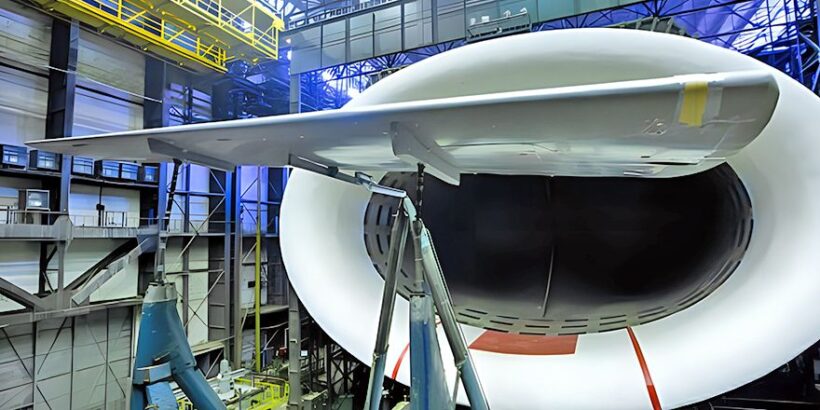The Zhukovsky Central Aerohydrodynamic Institute has conducted the next stage of tests within the framework of the Integral-RS complex scientific and technical project on the formation of the appearance of a promising regional aircraft with the technology of energy flow control (EFCC) and electrically driven impellers. The work is being carried out in co-operation with the Baranov Central Institute of Aircraft Engineering and other industry institutes.
Providing transport accessibility to remote and hard-to-reach municipalities in Siberia, the Far East and the Far North is a top priority for the Russian aircraft industry. Aircraft flying local and intra-regional routes mostly take off and land on small airfields with unpaved runways up to 1000 metres long. The application of ESC technology in the design of this type of aircraft will make it possible to expand the basing conditions.
Earlier, TsAGI specialists conducted two stages of research on the impeller distributed propulsion system technology. At the first stage, a prototype wing section with five impellers was designed and manufactured. It is intended for experimental research in a wind tunnel and for flight tests as part of the flying laboratory Yak-40LL in SibNIA. At the next stage, scientists of the institute performed a series of bench tests in a large wind tunnel at low airflow velocities. This made it possible to study the aerodynamic characteristics of the experimental compartment and the features of its streamline at speeds up to 80 m/s.
For further research TsAGI created a stand Wing Console, designed to determine the effectiveness of improving the load-bearing properties of a mechanised wing with the use of ESC technology. The bench is implemented on the basis of a full-scale wing console of a civil aircraft both in standard configuration and with an experimental flap, which is a complex highly loaded metal-composite structure with a distributed propulsion system of nine electrically driven impellers.
Wing section with impellers of a promising regional aircraft tested in TsAGI wind tunnel
The experiments were conducted in a large low-speed wind tunnel TsAGI T-101. The purpose of the tests is to obtain and then compare the integral aerodynamic characteristics of the wing console in the layout with standard and experimental flaps. The results will make it possible to assess the increase in lift and aerodynamic quality, to confirm the positive effect of the influence of energy control of the streamline on the load-carrying properties of the wing, as well as to validate the results obtained by calculation.
At present, the first stage of aerodynamic tests of the Wing Console bench in the configuration with a standard flap has been completed. The experiments were conducted at flow velocities up to 30 metres per second. The angle of attack varied in the range from -2 to 25 degrees. As a result of these studies, TsAGI scientists obtained aerodynamic characteristics of the basic layout of the wing console, which will be used to compare with the layout of the prototype flap with energy control of the flow. In the future, after installation of the prototype flap, experts will conduct a second stage of experiments with installed impellers.
After analysing the obtained data, the experimental flap with energy control of the streamline will be installed on the flying laboratory on the base of Yak-40 aircraft for ground tests, study and generalisation of the obtained results.


